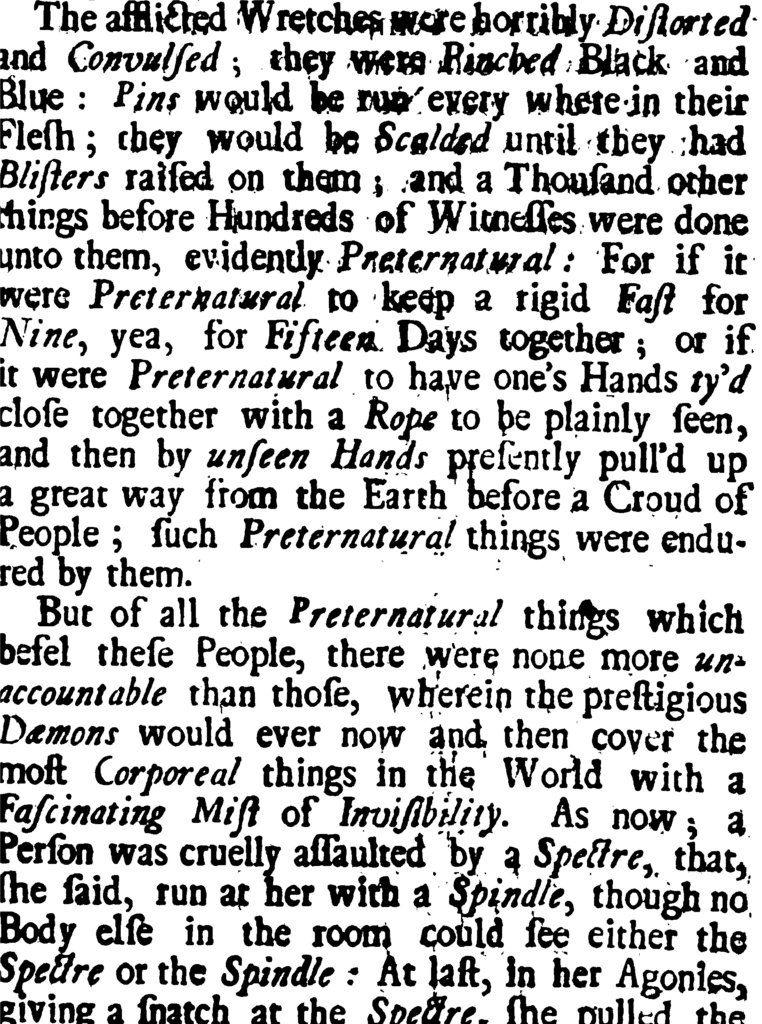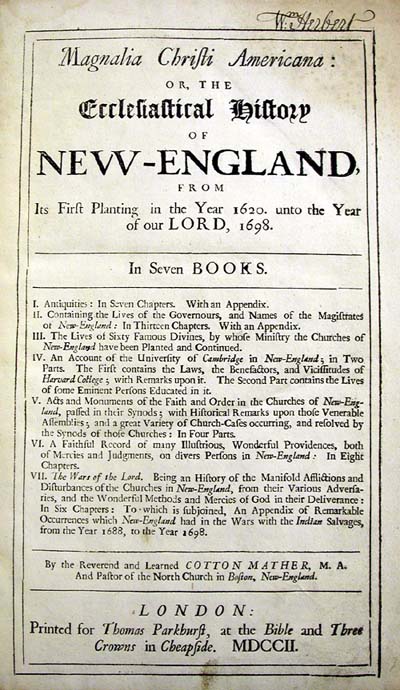
Boston minister Cotton Mather (1663-1728) may have used preternature more than any other early modern writer in the British Atlantic world. Mather employed the term preternatural frequently in his description of the events at Salem which he published in his massive treatise Magnalia Christi Americana in 1702. In fact, he wrote “preternatural” six times in a single page of text. The above image contains five uses of the term within two paragraphs.
He noted that the troubles in Salem began with people afflicted with “Preternatural Vexations upon their Bodies, and a variety of cruel Torments, which were evidently inflicted from the Dæmons, of the Invisible World.” Mather explained the distinction between natural and preternatural in his discussion of how the afflicted were bewitched. He wrote:
“it was found, that various kinds of natural Actions, done by many of the accused in or to their own Bodies, as Leaning, Bending, Turning Awry, or Squeezing their Hands, or the like, were presently attended with the like things preternaturally done upon the Bodies of the afflicted, though they were so far asunder, that the afflicted could not at all observe the accused.“
-Cotton Mather, Magnalia Christi Americana, Book II, p. 60.
He used preternatural in this treatise to mean something that was extraordinary and beyond the powers of nature, caused by invisible forces, and associated with diabolic witchcraft. Mather addressed the skeptics of such “odd Phænomena” by instructing them that there were “Hundreds of the most sober People” who had witnessed these events. Mather’s works show how the preternatural could function as both a category of thought and a set of interrelated beliefs about how the invisible world operated, and he made significant contributions to the transatlantic debate over preternature from his home in New England.


